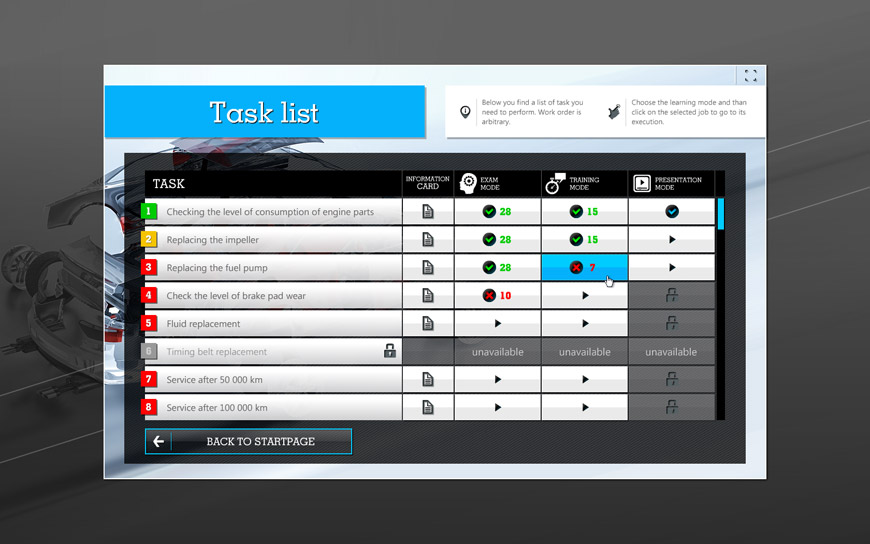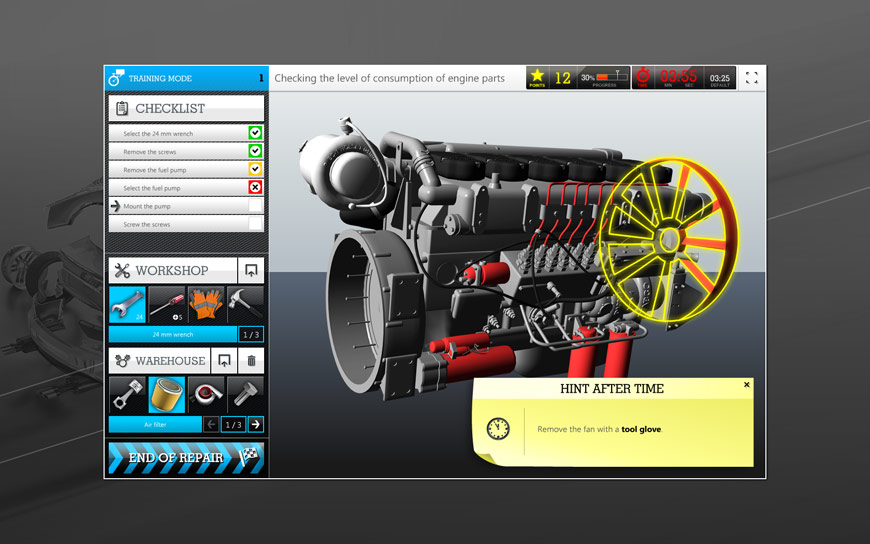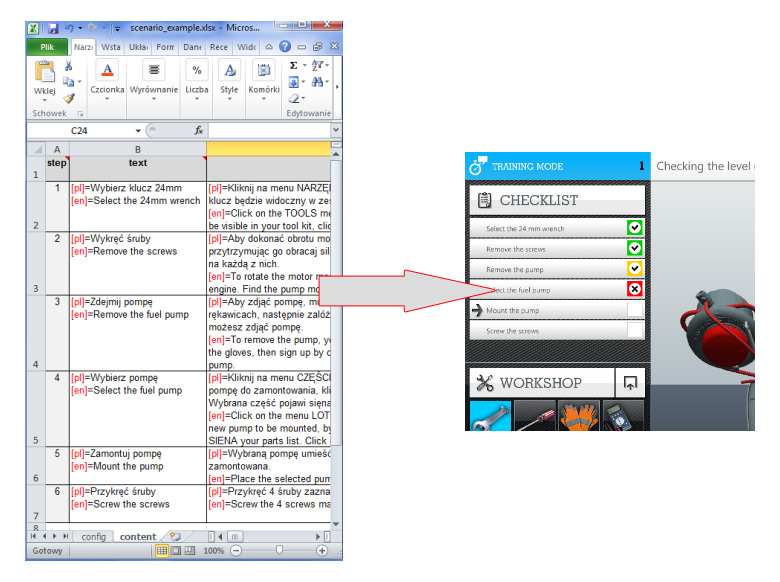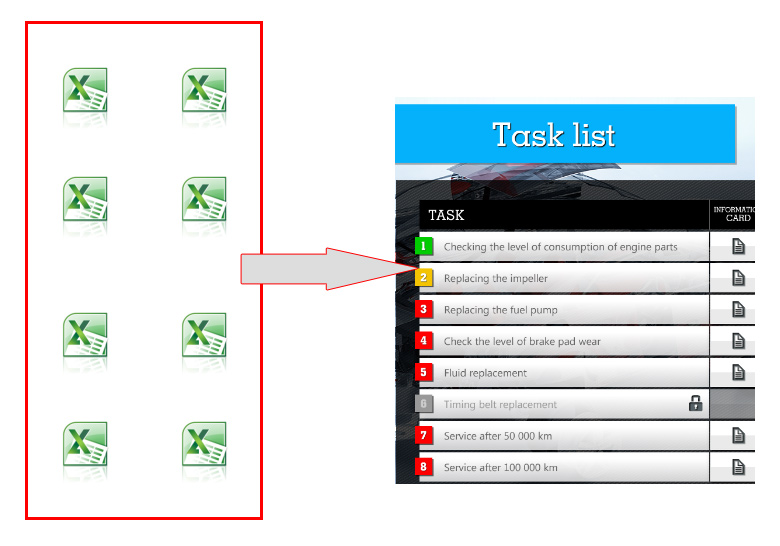3D Maintenance Simulator

3D Maintenance Simulator is a realistic virtual tool that is irreplaceable in engineering. Its advantages include:
- usefulness in maintenance and design
- the most effective learning method
- considerable training cost cut
- no risk of damaging expensive machines
- no limits concerning 3D models
- easy way of creating training scenarios – using MS Excel
- an insight into the training results
About 3D Maintenance Simulator
3D Maintenance Simulator is an innovative tool that has finally blurred the line between simulation and reality.
There is no difference between operating in 3D Maintenance Simulator and taking real actions except the fact that reality cannot be customized to your needs and the time cannot be reversed. Avoid the risk of damaging machines, injuring employees and improve your maintenance process using state-of-the-art technology – it has never been as close as today.
Simulation in 3D is more than photos and typical 3D graphics. It requires specific actions from the user which are specified in service to-do checklist and can be subject to assessment.
Using and operating 3D Maintenance Simulator do not require specific IT knowledge. Regular users with basic computer skills are able to use the full functionality of the product and even create training scenarios using pre-set templates in MS Excel.



Benefits
The main benefits of the product can be divided into 3 basic areas:
1. Proactive maintenance:
Saving time and money:
- speed of maintenance operations is improved,
- possibility of registering new types of breakdowns and repairs, that occurred at an empirical level, as a scenario – the solution for the same problem is not resolved many times by different people e.g. engineers from different shifts;
Work continuity and risk management:
- helpful in standardizing and planning maintenance processes in both preventive and predictive model;
2. Design:
Managing the product’s life cycle:
- when designing machines or constructions, there can be few alternatives created, which allows you to do the tests to find the best solution in terms of maintenance and operating;
3. Training:
Learning effectiveness:
- learning by actually doing the work is the most effective type of training – trainees remember 90% of what they do which is impressive compar to 30% of what they see,
Saving money:
- no damage of expensive devices,
- no trainer’s fees,
- no travel and facility costs;
Environmental Health and Safety:
- making mistakes is safe to trainees and the surroundings;
Human Resources management:
- easy insight into the training results, planning the path of lessons and scheduling.
Unique features
First of all 3D Maintenance Simulator gives you the limitless possibilities of creating 3D models. Number of models, parts and components, their design and complexity are limited only by imagination. It is also highly flexible, because models can be edited and reloaded into the Simulator.
Task scenarios can be added and edited even faster. This does not require special IT knowledge, only basic knowledge of MS Excel. Every regular computer user is able to create and load scenarios just through completing the Excel sheet.
3D Maintenance Simulator is a perfect connection between a detailed view of the machine and the holistic approach. You cannot miss the big picture when working on small problems.
The Simulator allows the user to operate in three modes: practice, exam and presentation. Moreover, it can give hints in the case of set time of inactivity.
Creating task scenarios
Well prepared scenario is an essential condition to get the most of 3D Maintenance Simulator. It must be not only as close to reality as possible but also up to date and adapted to the current needs of the client.
To reach the above goals, we supply the special tool, i.e. MS Excel template that allows the user to freely create and edit task scenarios at any time. The other advantage of this solution is the simplicity as, only the basic functions of a well-known spreadsheet program are used.
Key parameters used in creating scenarios:
- step – a step in checklist
- test – the description of the step
- help – the text of hint which appears after set time
- time_help – when the hint should appear
- points – the number of points to get or finishing the task’s phase correctly
- points_afterHelp – the number of points to get after the hint appears
- action_id – the action that must be performed (defined list of actions)
- action_parameters – parameters for the specific step (defined list of parameters e.g.: [toolID], [partID], [putOnStage]).
The number of lines in Excel sheet = the number of steps to perform in a task

The number of Excel sheets = the number of tasks in the application

Creating scenarios to virtual simulators has never been easier!